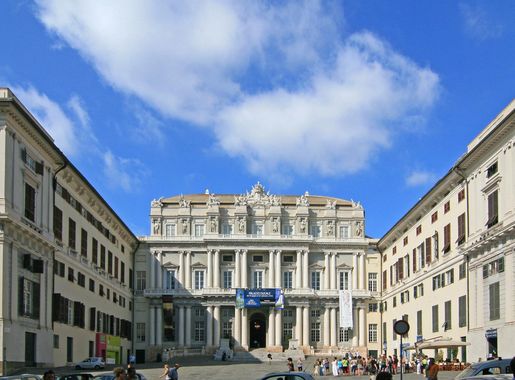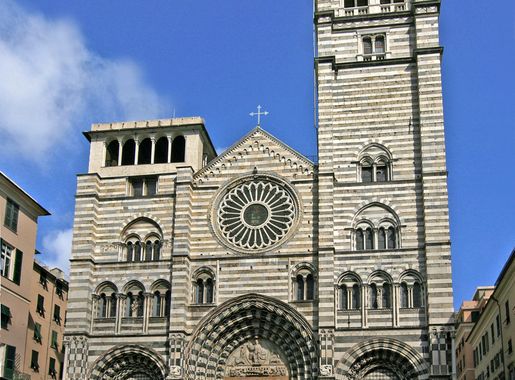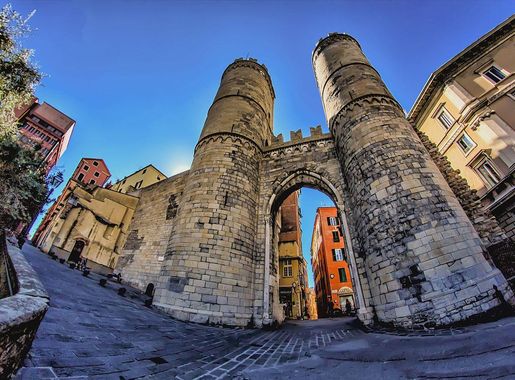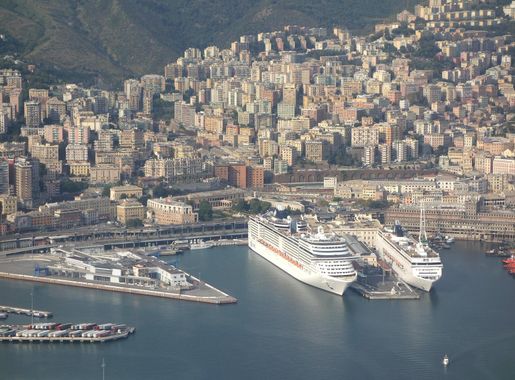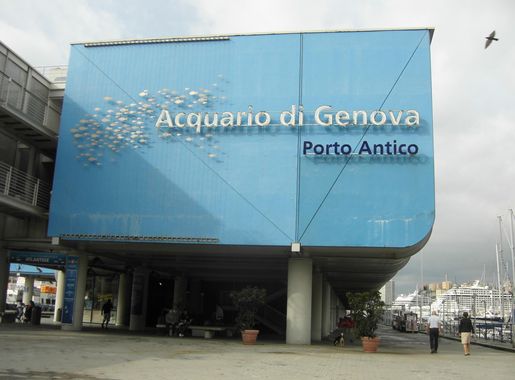
Centro Storico: The Heart of Genoa's Timeless Charm
Explore the historic heart of Genoa in Centro Storico, where medieval charm, stunning architecture, and vibrant culture come together in a captivating maze of alleyways.
Centro Storico, Genoa's historic center, is a labyrinth of narrow alleyways and bustling squares that transport visitors back in time. This area is one of the largest medieval city centers in Europe and offers a unique glimpse into Genoa's storied past. As you wander through its maze-like streets, you'll encounter centuries-old palazzi, charming churches, and hidden courtyards that reveal the rich history and culture of this ancient port city. The neighborhood is a treasure trove for history buffs and architectural enthusiasts. Key highlights include the grand Palazzo Ducale, a symbol of Genoese power and grandeur, and the striking San Lorenzo Cathedral, with its distinctive black-and-white striped façade. Don't miss the UNESCO-listed Strade Nuove and the Palazzi dei Rolli, a collection of Renaissance and Baroque palaces that once hosted visiting dignitaries. Centro Storico is not just about history; it's also a vibrant cultural hub. The area is filled with lively markets, quaint shops, and cozy cafes where you can savor traditional Ligurian cuisine. The scent of freshly baked focaccia and the sound of local chatter create an inviting atmosphere. Street performers and artists add to the lively vibe, making every corner of this neighborhood a delight to explore.
Local tips in Centro Storico
- Wear comfortable shoes; the cobblestone streets can be uneven.
- Visit early in the morning or late afternoon to avoid the crowds.
- Try the local specialty, pesto Genovese, at a traditional trattoria.
- Look out for small artisan shops selling handmade goods and souvenirs.
- Use a map or a GPS app; it's easy to get lost in the narrow alleys.
Centro Storico: The Heart of Genoa's Timeless Charm
Centro Storico, Genoa's historic center, is a labyrinth of narrow alleyways and bustling squares that transport visitors back in time. This area is one of the largest medieval city centers in Europe and offers a unique glimpse into Genoa's storied past. As you wander through its maze-like streets, you'll encounter centuries-old palazzi, charming churches, and hidden courtyards that reveal the rich history and culture of this ancient port city. The neighborhood is a treasure trove for history buffs and architectural enthusiasts. Key highlights include the grand Palazzo Ducale, a symbol of Genoese power and grandeur, and the striking San Lorenzo Cathedral, with its distinctive black-and-white striped façade. Don't miss the UNESCO-listed Strade Nuove and the Palazzi dei Rolli, a collection of Renaissance and Baroque palaces that once hosted visiting dignitaries. Centro Storico is not just about history; it's also a vibrant cultural hub. The area is filled with lively markets, quaint shops, and cozy cafes where you can savor traditional Ligurian cuisine. The scent of freshly baked focaccia and the sound of local chatter create an inviting atmosphere. Street performers and artists add to the lively vibe, making every corner of this neighborhood a delight to explore.
Iconic landmarks you can’t miss
Aquarium of Genoa
Experience the captivating marine life at the Aquarium of Genoa, one of Europe's largest and most immersive aquatic attractions.
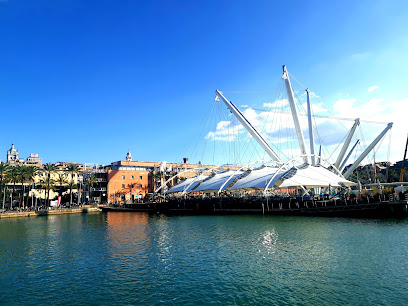
Piazza De Ferrari
Discover the vibrant heart of Genoa at Piazza De Ferrari, where stunning architecture meets lively cultural experiences and historical significance.

Porto Antico
Explore Porto Antico, Genoa's scenic waterfront, blending history, culture, and marine wonders in a beautiful setting.
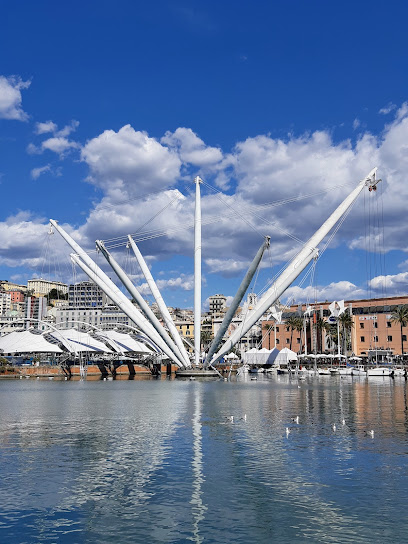
Christopher Columbus' House
Visit Christopher Columbus' House in Genoa to explore the birthplace of the famed explorer and experience the rich maritime history of Italy.
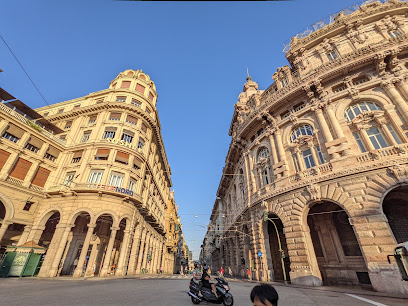
Piazza della Vittoria
Explore the grandeur of Piazza della Vittoria in Genoa, where history and stunning architecture converge in a beautiful urban landscape.

Strada Nuova Museums - Palazzo Rosso
Explore the exquisite art and history at Palazzo Rosso, a must-visit museum in Genoa's Strada Nuova, showcasing masterpieces in a stunning Baroque palace.
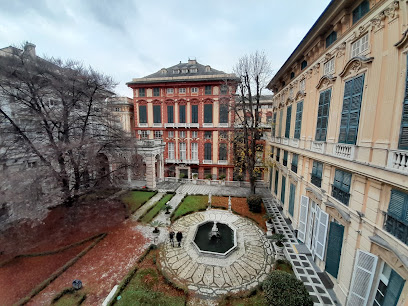
Porta Soprana
Experience the allure of Porta Soprana, a historic monument in Genoa showcasing medieval architecture and vibrant local culture.

St Andrew cloister ruins
Explore the stunning ruins of St. Andrew Cloister in Genoa, Italy, where history and tranquility converge in a picturesque setting.
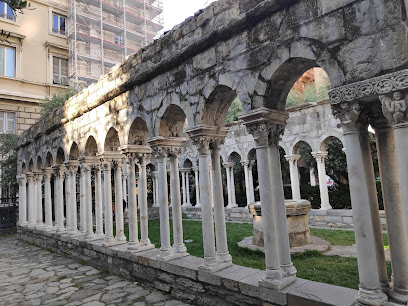
Monumento a Giuseppe Garibaldi
Explore the Monumento a Giuseppe Garibaldi in Genoa, a historical memorial celebrating Italian unity with stunning architecture and rich cultural significance.
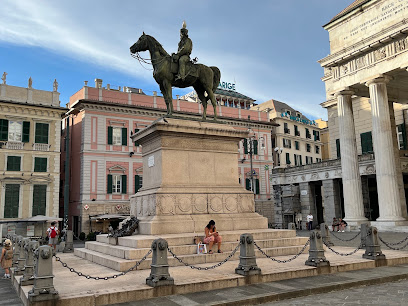
Centro storico
Explore the enchanting Centro Storico of Genoa, a UNESCO World Heritage site rich in history, culture, and vibrant local flavors.
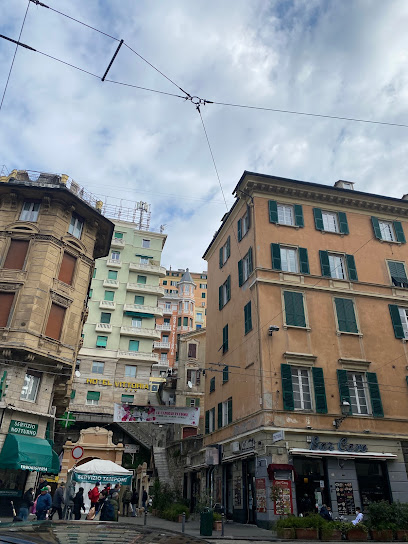
Unmissable attractions to see
Galata Museo del Mare
Explore Genoa's maritime legacy at the Galata Museo del Mare, where history, innovation, and adventure set sail.
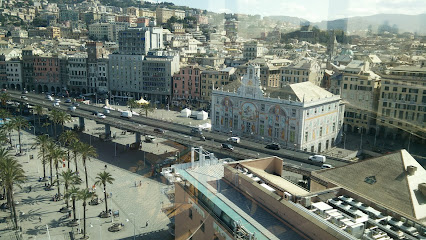
Christopher Columbus' House
Explore the iconic birthplace of Christopher Columbus in Genoa, a fascinating blend of history and culture that captivates every visitor.
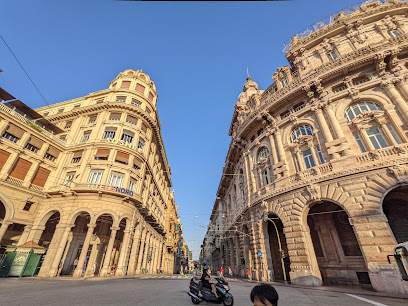
Centro storico
Explore the enchanting Centro Storico of Genoa, a UNESCO World Heritage site filled with history, art, and vibrant local life.
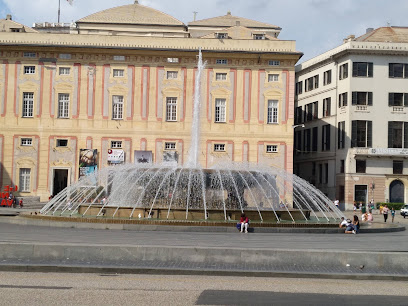
Essential places to dine
Osteria di Vico Palla
Experience authentic Italian and seafood cuisine at Osteria di Vico Palla, a must-visit restaurant in Genoa's historic center.
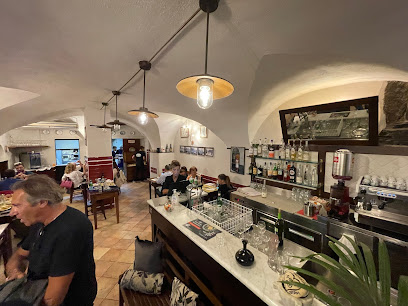
Trattoria Vegia Zena
Experience authentic Ligurian flavors at Trattoria Vegia Zena in Genoa – where every dish tells a story.
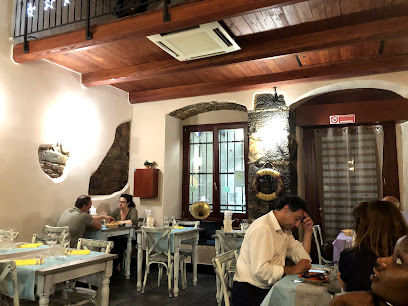
Da Leccarsi i Baffi
Discover authentic Italian flavors at Da Leccarsi i Baffi in Genoa—where every dish tells a story of culinary passion.
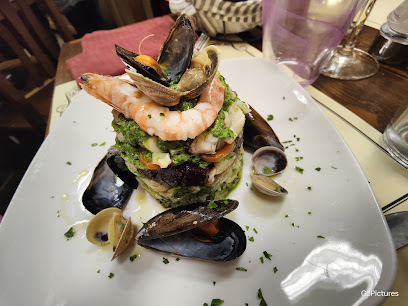
I Cuochi
Experience authentic Ligurian flavors at I Cuochi, a premier seafood restaurant in Genoa’s historic center.
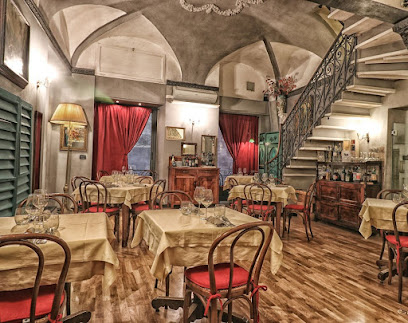
PASTA STREET
Experience authentic Italian pasta at Pasta Street in Genoa's lively Piazza della Meridiana - a must-visit for food enthusiasts!
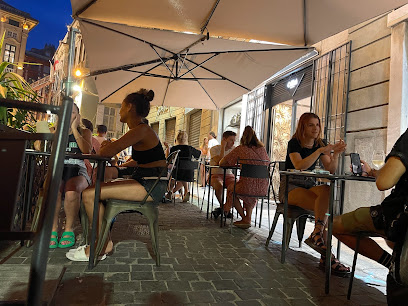
Osteria Il Cadraio
Discover authentic Ligurian cuisine at Osteria Il Cadraio in Genoa - where tradition meets flavor in every dish.
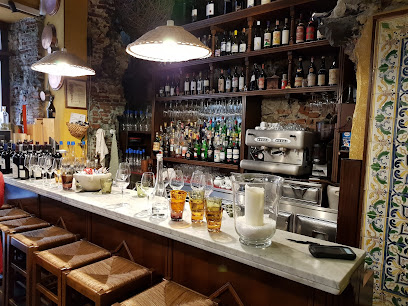
Trattoria Il Grillo Parlante - Centro Storico
Experience authentic Italian cuisine at Trattoria Il Grillo Parlante in Genoa's historic center—where tradition meets flavor.
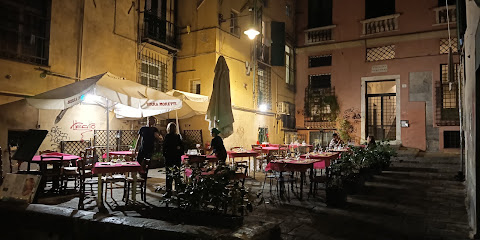
Osteria Pandemonio
Experience authentic Ligurian cuisine at Osteria Pandemonio in Genoa—where every dish tells a story and every sip celebrates local wines.
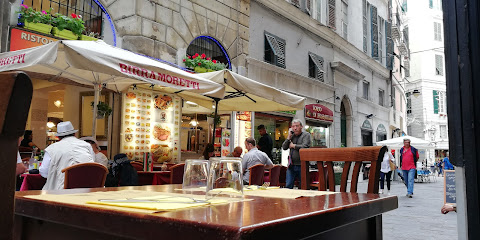
Soul Kitchen
Experience authentic Italian cuisine at Soul Kitchen in Genoa - where fresh ingredients meet vegan delights for an unforgettable dining experience.

Locanda degli Adorno
Experience authentic Ligurian cuisine at Locanda degli Adorno, where fresh seafood meets warm Italian hospitality in the heart of Genoa.
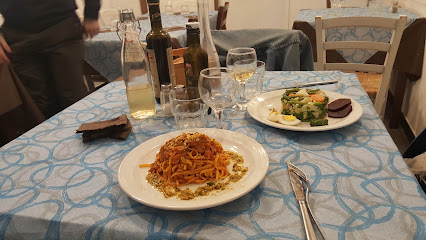
Markets, malls and hidden boutiques
RINASCENTE Genoa Store
Discover the essence of Italian shopping at Rinascente Genoa, where fashion meets gourmet delights and breathtaking views.
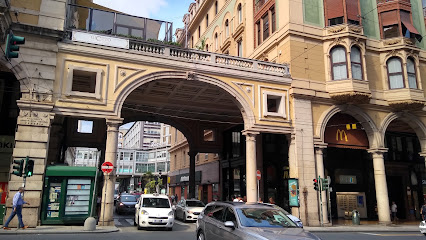
Best Store
Discover a shopping paradise in Genoa at Best Store, where irresistible finds and local flavors await every visitor.

San Lorenzo Souvenir
Explore the essence of Genoa at San Lorenzo Souvenir, your go-to destination for unique gifts and local treasures in the heart of the city.
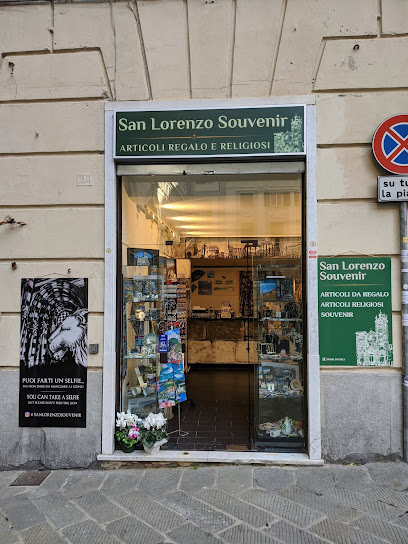
Genova Experience
Explore Genoa's rich culture and history at Genova Experience, your go-to souvenir store and tourist information center in the heart of the city.
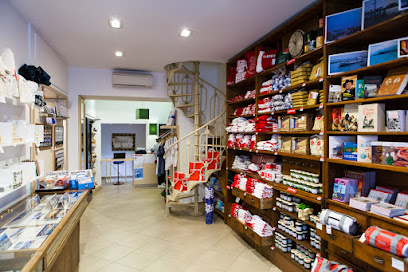
Pescetto Abbigliamento
Discover the essence of Italian fashion at Pescetto Abbigliamento, a stylish clothing store in the heart of Genoa.
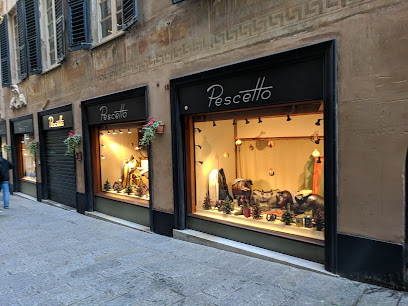
Vinicio Boutique Genoa
Discover style and elegance at Vinicio Boutique in Genoa, where fashion meets quality in a charming shopping experience.
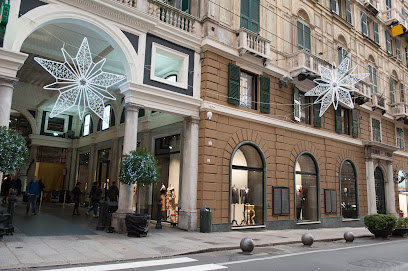
lipstick vintage genova
Explore unique fashion finds at Lipstick Vintage in Genoa – a hidden gem for vintage clothing enthusiasts and style seekers.
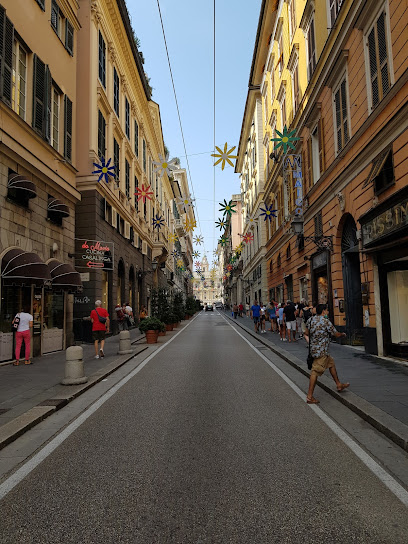
Genua winkels
Discover Genua Winkels, a vibrant shopping hub in Genoa, where history meets modernity through unique shops and local crafts.
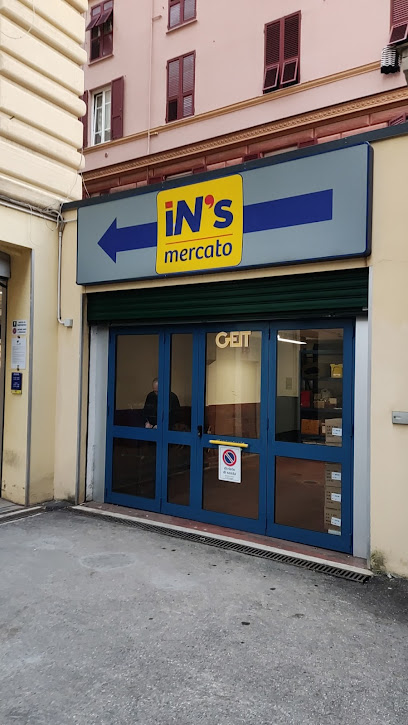
Souvenir Profumeria Bigiotteria Genova
Explore the essence of Genoa at Souvenir Profumeria Bigiotteria, where exquisite perfumes meet unique souvenirs in a charming atmosphere.
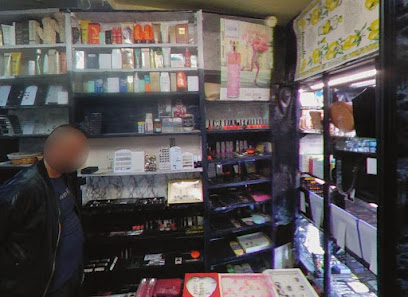
SUKRIA
Discover the heart of Genoa through unique souvenirs at Sukria, where local craftsmanship meets vibrant culture.
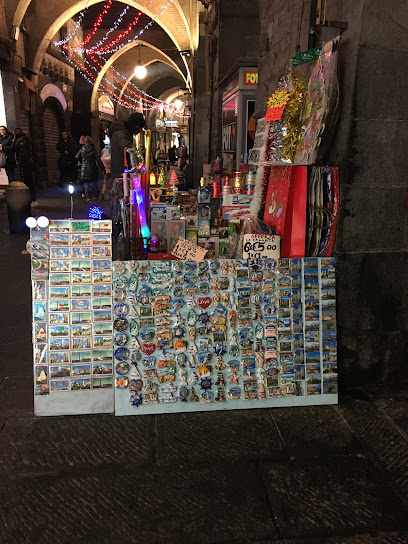
Essential bars & hidden hideouts
La Goletta Seaside pub
Discover the lively atmosphere and delicious local cuisine at La Goletta Seaside Pub, a vibrant gem along the Genoese coast.
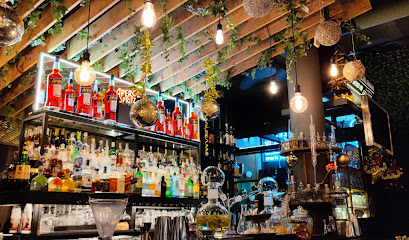
Il Mugugno
Experience the charm of Il Mugugno in Genoa, where gourmet burgers meet local flavors in a vibrant historic setting.
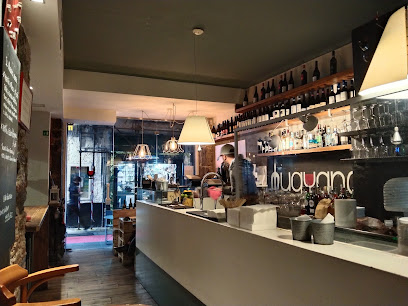
Caffè degli Specchi
Discover the charm of Genoa at Caffè degli Specchi, where artisan coffee, fine chocolates, and French cuisine come together in a historic setting.
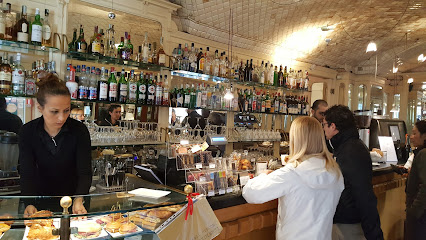
Rebus Cocktail Bar
Experience the artistry of cocktails and delightful small plates at Rebus Cocktail Bar in the heart of Genoa, where every visit is a new flavor adventure.
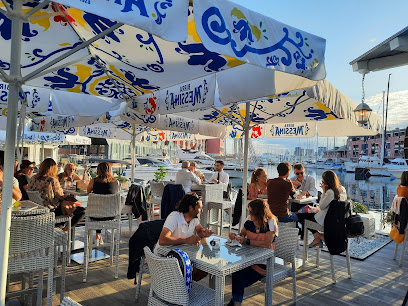
Old Port Bar
Discover the vibrant atmosphere and delightful cuisine at Old Port Bar, a must-visit spot in Genoa's stunning waterfront.

The Honey Bar
Discover the unique flavors of The Honey Bar in Genoa, where honey-infused cocktails and a cozy ambiance create a perfect escape for tourists.
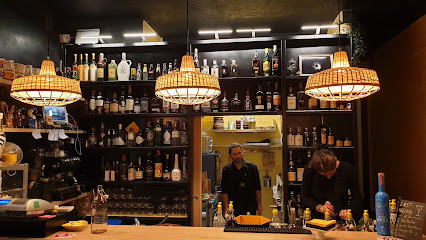
Delfín Bar
Discover the cozy charm of Delfín Bar in Genoa, where affordable drinks and a welcoming atmosphere await you in the city's historic center.
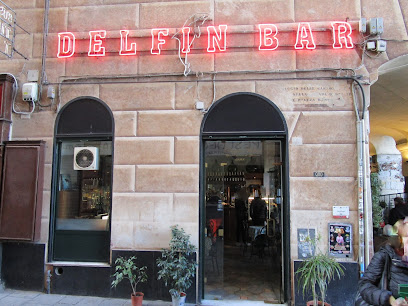
San Giorgio
Discover the heart of Genoa at San Giorgio, a charming bar offering local flavors and a cozy atmosphere in the city's historic center.
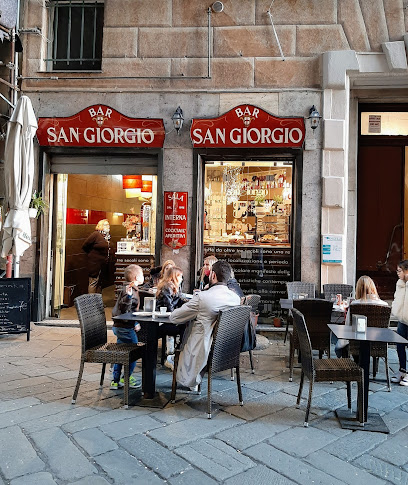
Manhattan Bar
Discover the quintessential bar experience in Genoa, offering a fine selection of wines and cocktails in an inviting atmosphere.
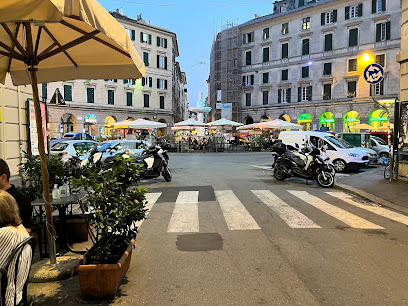
Il Cavaturaccioli
Discover the vibrant cocktail culture of Genoa at Il Cavaturaccioli, where every sip tells a story of local flavors and creativity.
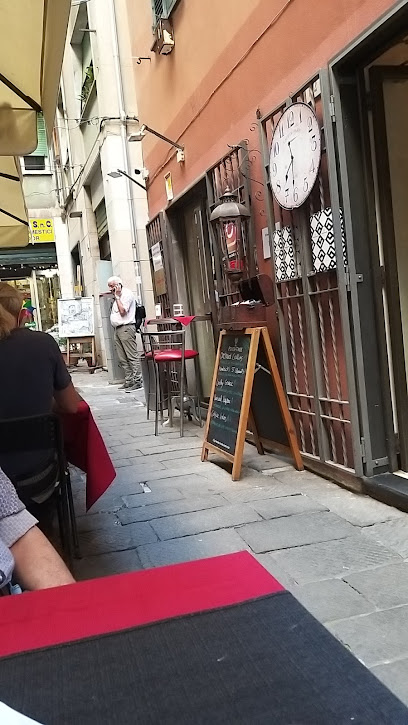
Local Phrases
-
- HelloCiao
[chow] - GoodbyeArrivederci
[ah-ree-veh-der-chee] - YesSì
[see] - NoNo
[noh] - Please/You're welcomePer favore/Prego
[pair fah-voh-reh/preh-goh] - Thank youGrazie
[grah-tsyeh] - Excuse me/SorryScusi/Mi dispiace
[skoo-zee/mee dee-spyah-cheh] - How are you?Come stai?
[koh-meh stai] - Fine. And you?Bene. E tu?
[beh-neh/eh too] - Do you speak English?Parli inglese?
[par-lee een-gleh-zeh] - I don't understandNon capisco
[non kah-pee-skoh]
- HelloCiao
-
- I'd like to see the menu, pleaseVorrei vedere il menu, per favore
[vohr-ray veh-deh-reh eel meh-noo/pair fah-voh-reh] - I don't eat meatNon mangio carne
[non man-joh kahr-neh] - Cheers!Salute!
[sah-loo-teh] - I would like to pay, pleaseVorrei pagare, per favore
[vohr-ray pah-gah-reh/pair fah-voh-reh]
- I'd like to see the menu, pleaseVorrei vedere il menu, per favore
-
- Help!Aiuto!
[ah-yoo-toh] - Go away!Vai via!
[vah-ee vyah] - Call the Police!Chiamate la polizia!
[kyah-mah-teh lah poh-lee-tsyah] - Call a doctor!Chiamate un dottore!
[kyah-mah-teh oon doh-toh-reh] - I'm lostMi sono perso
[mee soh-noh pehr-soh] - I'm illSono malato/a
[soh-noh mah-lah-toh/ah]
- Help!Aiuto!
-
- I'd like to buy...Vorrei comprare...
[vohr-ray kohm-prah-reh] - I'm just lookingSto solo guardando
[stoh soh-loh gwar-dahn-doh] - How much is it?Quanto costa?
[kwahn-toh koh-stah] - That's too expensiveÈ troppo caro
[eh troh-poh kah-roh] - Can you lower the price?Puoi abbassare il prezzo?
[pwah-ee ahb-bahs-sah-reh eel preh-tsoh]
- I'd like to buy...Vorrei comprare...
-
- What time is it?Che ora è?
[keh oh-rah eh] - It's one o'clockÈ l'una
[eh loo-nah] - Half past (10)Sono le dieci e mezza
[soh-noh leh dee-ay-chee eh meh-tsah] - MorningMattina
[maht-tee-nah] - AfternoonPomeriggio
[poh-meh-ree-joh] - EveningSera
[seh-rah] - YesterdayIeri
[yeh-ree] - TodayOggi
[oh-jee] - TomorrowDomani
[doh-mah-nee] - 1Uno
[oo-noh] - 2Due
[doo-eh] - 3Tre
[treh] - 4Quattro
[kwah-troh] - 5Cinque
[cheen-kweh] - 6Sei
[say] - 7Sette
[seht-teh] - 8Otto
[oh-ttoh] - 9Nove
[noh-veh] - 10Dieci
[dee-ay-chee]
- What time is it?Che ora è?
-
- Where's a/the...?Dov'è un/il...
[doh-veh oon/eel] - What's the address?Qual è l'indirizzo?
[kwahl eh leen-deer-eetzoh] - Can you show me (on the map)?Puoi mostrarmi (nella mappa)?
[pwah-ee mohs-tar-mee/nell-lah mahp-pah] - When's the next (bus)?Quando è il prossimo (autobus)?
[kwahn-doh eh eel prohs-shee-moh/ow-toh-boos] - A ticket (to ....)Un biglietto (per ....)
[oon beel-lyet-toh/pair]
- Where's a/the...?Dov'è un/il...
History of Centro Storico
-
The Centro Storico, or Historic Center of Genoa, dates back to the Roman era when it was established as a crucial port city. Genoa's strategic position along the Mediterranean Sea allowed it to flourish as a maritime power. By the 11th century, the city was a prominent player in trade and commerce, establishing itself as a major maritime republic alongside Venice and Pisa.
-
In the 12th century, Genoa became a self-governing comune, leading to a period of political and economic growth. The citizens of Genoa established a republican government, which allowed for the construction of significant public buildings and the expansion of the city walls, many of which are still visible in the Centro Storico today. This era marked the beginning of Genoa's identity as a powerful city-state.
-
The Palazzo Ducale, originally built in the 13th century, became the residence of the Doges of Genoa. It symbolizes the city's political power and cultural achievements. The building has undergone various renovations and today houses museums and art exhibitions, reflecting the rich history and artistic legacy of Genoa.
-
The 15th and 16th centuries heralded the Age of Exploration, with Genoa playing a pivotal role in global trade. Notable figures like Christopher Columbus, born in Genoa, contributed to the city’s reputation as an epicenter of maritime exploration. The Centro Storico showcases numerous palaces and churches built during this prosperous time, reflecting the wealth generated from trade.
-
The 17th century brought the Baroque architectural style to the Centro Storico, leading to the construction of grand churches and palaces. Notable examples include the Church of San Lorenzo and the Palazzo Rosso, which highlight the opulence of the period. This architectural flourishing represents the city's cultural and artistic advancements during a time of both internal strife and external ambition.
-
Genoa was heavily bombed during World War II, which led to significant destruction in the Centro Storico. Post-war reconstruction efforts focused on preserving the historical integrity of the area while adapting to modern needs. Today, the Centro Storico stands as a blend of ancient and modern, with its narrow alleyways and historic buildings attracting visitors from around the world.
-
In recent decades, the Centro Storico has experienced a cultural renaissance, with initiatives aimed at revitalizing the area. The establishment of cultural events, festivals, and the promotion of local cuisine have reinvigorated the neighborhood, making it a vibrant hub of activity. The rich history, coupled with contemporary artistic expressions, continues to draw visitors and locals alike.
Centro Storico Essentials
-
Centro Storico is conveniently located in the heart of Genoa and can be easily accessed from various neighborhoods. If you’re arriving by train, the main train station, Genova Piazza Principe, is just a short walk away. From the airport, you can take the Volabus, which connects to the city center. Alternatively, local buses also operate to various points in the city, including stops near Centro Storico.
-
Centro Storico is best explored on foot due to its narrow streets and rich history. Public transport, including buses and the metro, can be used to reach the outskirts of the neighborhood. Bicycles are not recommended due to the cobblestone streets, but bike-sharing services are available in nearby areas. Taxis and rideshare services are also an option for longer distances.
-
While Centro Storico is generally safe, tourists should remain vigilant, especially in crowded areas. Pickpocketing can occur, particularly near major attractions like the Cathedral of San Lorenzo and the Piazza de Ferrari. It's advisable to avoid the alleyways at night, particularly around the areas of Via del Campo and the southern fringes of the neighborhood.
-
In case of an emergency, dial 112 for immediate assistance. The local police station is located in the Piazza della Vittoria. For medical emergencies, there are hospitals nearby, including Ospedale San Martino. It is recommended to have travel insurance that covers medical emergencies. Pharmacies are also available throughout the neighborhood for minor health issues.
-
Fashion: Do dress modestly when visiting religious sites. Avoid wearing overly casual clothing when dining in upscale restaurants. Religion: Do respect local customs, especially in churches. Public Transport: Do give up your seat for the elderly and disabled. Don't eat or drink on public transport. Greetings: Do greet with a friendly 'Buongiorno' or 'Ciao.' Don't be overly formal, as locals appreciate friendliness. Eating & Drinking: Do try the local focaccia and seafood dishes. Don't rush through meals; dining is an important social activity in Italy.
-
To experience Centro Storico like a local, explore the vibrant Mercato Orientale for fresh produce and local delicacies. Try to engage with local artisans and shopkeepers, as they often have fascinating stories about the neighborhood’s history. Attend a local festival if your visit coincides with one, and don’t miss the chance to enjoy a traditional aperitivo in the evening at a local bar.
Nearby Cities to Centro Storico
-
Things To Do in Cinque Terre
-
Things To Do in Milan
-
Things To Do in Parma
-
Things To Do in Turin
-
Things To Do in Saint Roman
-
Things To Do in La Rousse
-
Things To Do in Pisa
-
Things To Do in Larvotto
-
Things To Do in Monte Carlo
-
Things To Do in Lucca
-
Things To Do in La Condamine
-
Things To Do in Monaco-Ville
-
Things To Do in Les Moneghetti
-
Things To Do in Moneghetti
-
Things To Do in Fontvieille



